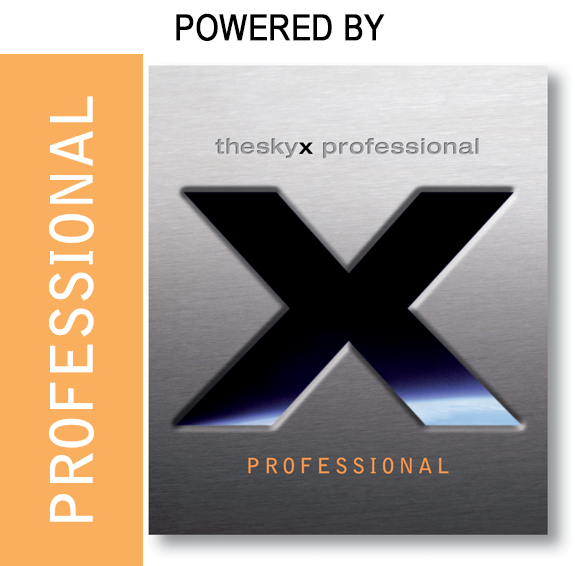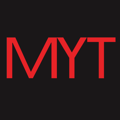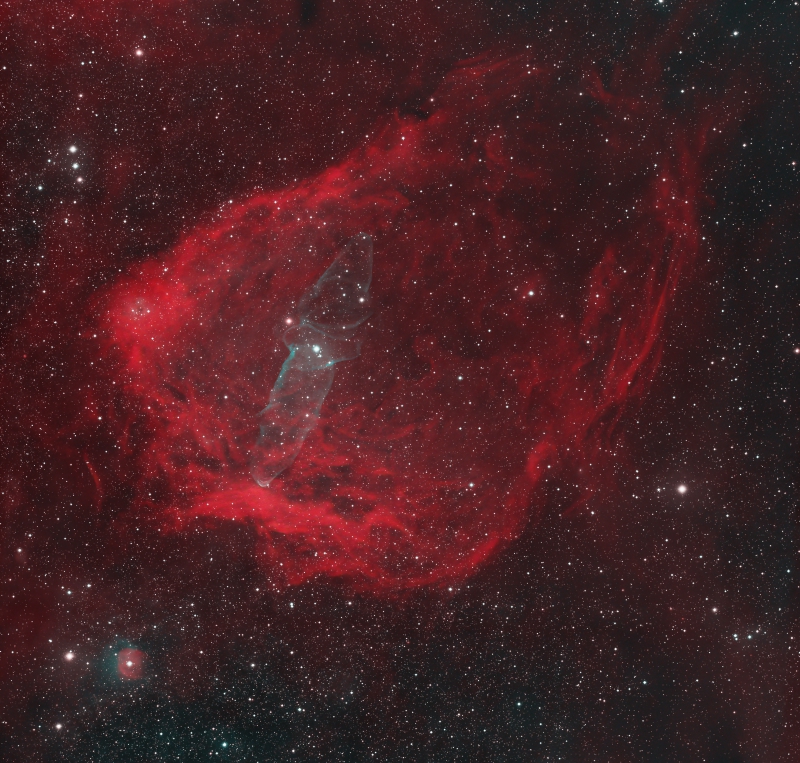New version of Sh2-129, The Bat Nebula and Ou4, the Squid nebula
Published 9 July 2021
Click the image above for full resolution
About this object
Update to the processing of Sh2-129:July 2021. This image of the Flying Bat nebula and the squid nebula was undoubtedly the hardest image I’ve tried to process. The image was taken in three steps, at home, the Okie Tex Star Party in Kenton OK in Sep and my friend Dean's home in Ky using two scopes. I started taking a few Ha exposures at home before I left for the Okie Tex star party using the Stellarvue SV70 and continued imaging using the SV70 at Okie Tex. My friend Dean also imaged this object and provide me a bunch of Ha and OIII exposures with his Tak FS60 and all were combined into this composite image using PixInsight. The squid nebula, Ou 4, is extremely faint and is shown here at close to its relative brightness. It looks like a ghostly blue green transparent aberration. It was only recently discovered in 2011 by French astro imager Nicholas Outters and has a elongated bipolar shape. It’s virtually invisible in normal RGB or Ha exposures and only faintly visible using a OIII filter. This image combines 12.3 hrs of Ha and 24hrs of OIII exposures. The image scale is 5.98 arcsec/pixel.
Processing: This image was processed with PixInsight. Topaz De Noise AI was used as an intermediate step to de noise a starless image.
The subframes were reduced and registered and cosmetically corrected using the Batch preprocessing script of PixInsight.
The registered images were run through the Normalize, Scale, Gradient (NSG) script in PixInsight to correctly account for the different sky conditions, scopes and camera's
The master Ha and OIII images were created using the PixInsight image integration tool.
The masters were gradient corrected using dynamic background extraction
The linear Starnet script was used to create starless versions of the Ha and OIII masters and the script was also used to create a star mask using the Ha image.
The starless Ha and OII images were combined into a HOO color image and the normal Ha and OIII images with stars were also combined into a HOO image.
The background neutralization tool was used to color correct the backgrounds of both images
Both HOO images were noise rejected using TGV De Noise in the linear state
Both HOO images were stretched using the histogram tool.
The starless HOO image was saved as a tiff and opened in Topaz Labs De Noise AI and noise rejection was applied at level 4 and the image was blinked and inspected to make sure no spurious details were added.
The starless HOO image was brought back into PixInsight and the star mask made earlier applied to the starless image. Pixel math was then used to write the HOO image with stars to the starless image transferring the stars to the De Noised starless image
Several iterations of curves were applied enhance the nebula
Adam Blocks star de emphasis technique was used to tone down the multitude of medium to small stars giving more visibility to the nebula.
Several more iterations of curves and color saturation were applied to various parts of the image and the image was saved as a jpeg.
Update to the processing of Sh2-129:July 2021. This image of the Flying Bat nebula and the squid nebula was undoubtedly the hardest image I’ve tried to process. The image was taken in three steps, at home, the Okie Tex Star Party in Kenton OK in Sep and my friend Dean's home in Ky using two scopes. I started taking a few Ha exposures at home before I left for the Okie Tex star party using the Stellarvue SV70 and continued imaging using the SV70 at Okie Tex. My friend Dean also imaged this object and provide me a bunch of Ha and OIII exposures with his Tak FS60 and all were combined into this composite image using PixInsight. The squid nebula, Ou 4, is extremely faint and is shown here at close to its relative brightness. It looks like a ghostly blue green transparent aberration. It was only recently discovered in 2011 by French astro imager Nicholas Outters and has a elongated bipolar shape. It’s virtually invisible in normal RGB or Ha exposures and only faintly visible using a OIII filter. This image combines 12.3 hrs of Ha and 24hrs of OIII exposures. The image scale is 5.98 arcsec/pixel.
Processing: This image was processed with PixInsight. Topaz De Noise AI was used as an intermediate step to de noise a starless image.
The subframes were reduced and registered and cosmetically corrected using the Batch preprocessing script of PixInsight.
The registered images were run through the Normalize, Scale, Gradient (NSG) script in PixInsight to correctly account for the different sky conditions, scopes and camera's
The master Ha and OIII images were created using the PixInsight image integration tool.
The masters were gradient corrected using dynamic background extraction
The linear Starnet script was used to create starless versions of the Ha and OIII masters and the script was also used to create a star mask using the Ha image.
The starless Ha and OII images were combined into a HOO color image and the normal Ha and OIII images with stars were also combined into a HOO image.
The background neutralization tool was used to color correct the backgrounds of both images
Both HOO images were noise rejected using TGV De Noise in the linear state
Both HOO images were stretched using the histogram tool.
The starless HOO image was saved as a tiff and opened in Topaz Labs De Noise AI and noise rejection was applied at level 4 and the image was blinked and inspected to make sure no spurious details were added.
The starless HOO image was brought back into PixInsight and the star mask made earlier applied to the starless image. Pixel math was then used to write the HOO image with stars to the starless image transferring the stars to the De Noised starless image
Several iterations of curves were applied enhance the nebula
Adam Blocks star de emphasis technique was used to tone down the multitude of medium to small stars giving more visibility to the nebula.
Several more iterations of curves and color saturation were applied to various parts of the image and the image was saved as a jpeg.
Image Details
- Optics : Stellarvue SV70T triplet refractor and Takahashi FS60 refractor
- Mount: Paramount MYT and Astrophysics AP 900
- Camera: QSI 583 and QSI 640
- Filters: Astrodon e-series RGB,5nm Ha, and 3nm OIII
- Exposure(min): HaOIII 738:1440 Total exposure time 36.3hrs
- Camera/Mount Control: The Sky X, CCD Auto Pilot 5
- Guiding: MyT, Unguided using ProTrack
- Processing: PixInsight and Topaz Labs De Noise AI
- Location: Stark Bayou Observatory, Ocean Springs, MS, Okie Tex Star Party Kenton OK, Doghouse observatory Nicholasville, Ky.
- Date: Sep/Oct 2017







